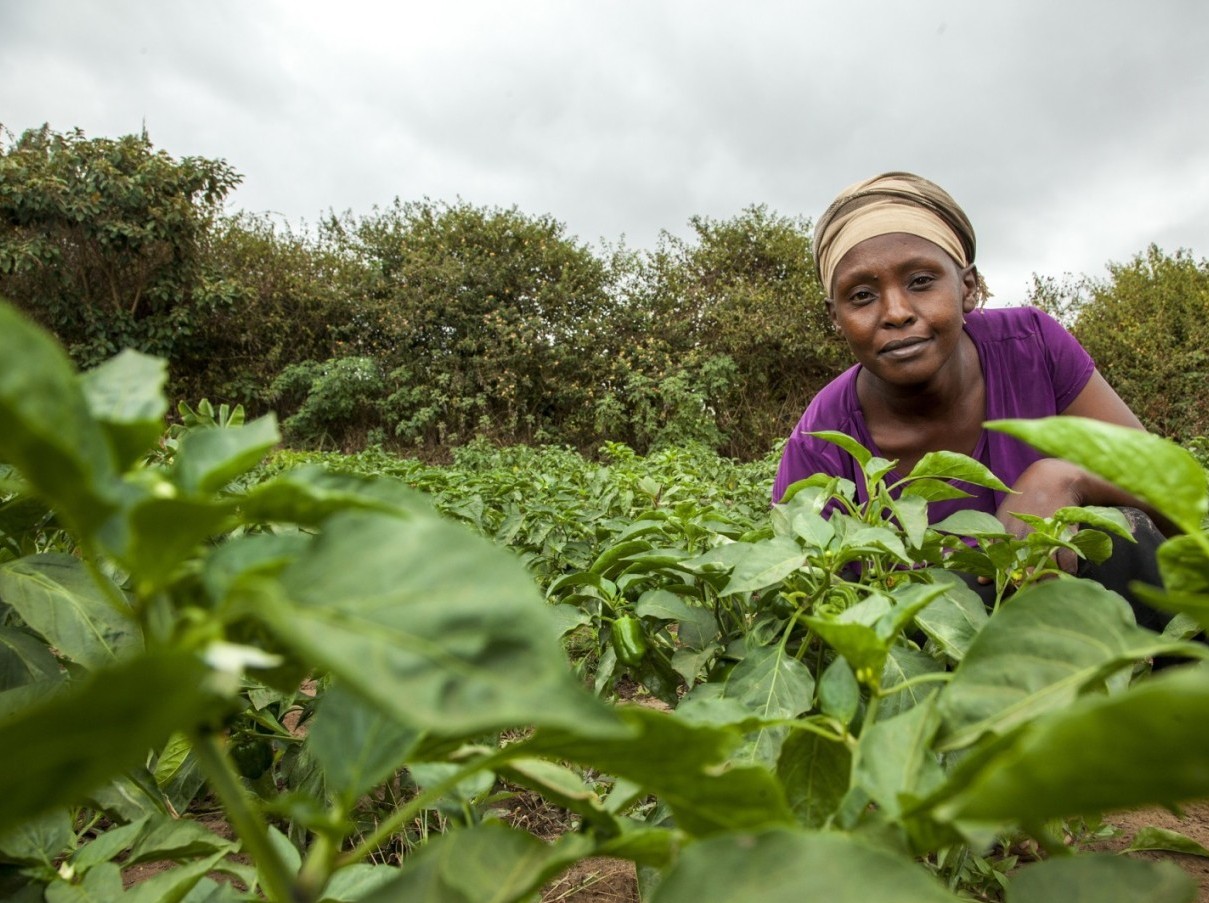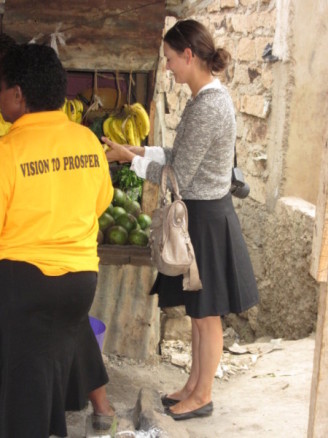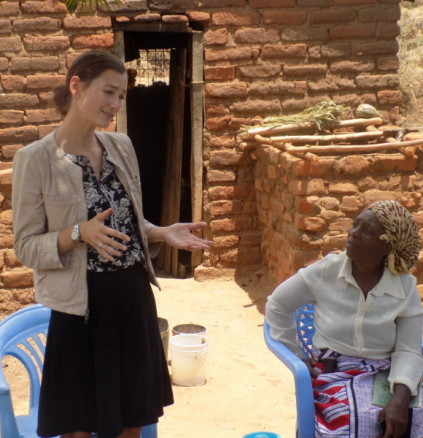Paola Uggla’s postcard from Kenya
31 Oct 2014

In September 2014, Hand in Hand International Trustee Paola Uggla visited our operations in Kenya. Here’s what she saw
Every morning, 30-year-old Felistus Gakuo wakes up, puts on her high heels, and strikes out onto the dirt roads of Tala, 30 miles outside Nairobi. Responsible for supporting an astonishing 520 micro-entrepreneurs, the petite Hand in Hand trainer says what motivates her most is the knowledge she’s helping.
It’s a story I heard more than once during my tour of Hand in Hand’s operations in Kenya. In just a few short days I met many inspiring people, and had my understanding of poverty redefined. But one of the things that sticks out the most is this: it’s the passion of Hand in Hand staff, from branch managers on down to trainers, that makes the biggest difference.
Monday, September 22

Paola visits a fruit stand
Kawangware on the outskirts of Nairobi is one of the biggest slums on the planet. Picture, if you can, almost the entire population of Copenhagen living in a space the size of New York’s Central Park, most without water or electricity. Patches of green crop up in the few places there’s irrigation, but the dominant shade is an intense red-brown, which colors the soil and unpaved roads. Fenced shacks line the streets, interspersed with empty, weed-choked plots that break the pattern like missing teeth.
I struggled to adapt my expectations as Bernard, Hand in Hand Eastern Africa’s Kawangware branch manager, and Lewis, a local field officer, led me through the streets. When a Hand in Hand member told me he’d opened a “shop” for household items, I imagined a cheerful indoor space painted in bright colours. Then I visited and discovered a small, roofed table made from wood and scrap metal. Other words would also have to be redefined throughout the course of the day. “House”, “garden” and “job” were among them.
Tuesday, September 24
On Tuesday I visited Kasarani with a group of observers from the Swedish International Development Cooperation Agency (Sida) and the Kenyan Ministry of Agriculture. Closer to the city center, the houses here were even more densely packed than in Kawangware. Goats ran underfoot. A herd of cows headed towards the highway.
Branch Manager Peris told us about a cabbage seller who, with the help of Hand in Hand, managed to save almost US $2,000 in a single year. That’s more than three times the gross national income per capita – truly incredible, and a real tangible improvement. Later, we toured a multi-storey spinach garden capable of producing a yield every week, and met a grocer so successful she’d built a house next door and sent all three of her children to school.
What I learned

Paola meets a Self-Help Group
Kenyans have a beautifully strong sense of community – a very healthy way of life. With a 10-month-old of my own, I could relate to seeing mothers minding little children. Getting used to Kenyans’ gregarious, physical greetings was a little more difficult. I’ve never felt so stiff!
People here use singing and dancing for all kinds of purposes: team building, welcoming guests, de-stressing and more. I wonder whether Europeans ever sang and danced as part of our daily routine. If so, why did we ever stop? It would certainly move our countries up the happiness index.
As I toured the slums and villages where Hand in Hand works, I quickly realised the value of operating at the grassroots level. Without feet on the ground, real change is impossible. I also realized what a difference it makes to recruit trainers who are passionate about their work. The branch managers and field officers I met were all absolutely wonderful.
Hand in Hand’s role in building communities, less immediately apparent, also became clear. It’s reasonable to assume the women who’ve received training in business and leadership will participate more actively in their communities. It’s also likely they’ll be more discerning consumers –when comparing microloans, for example. I was not surprised to learn that many women trained by Hand in Hand become leaders in their local communities.
